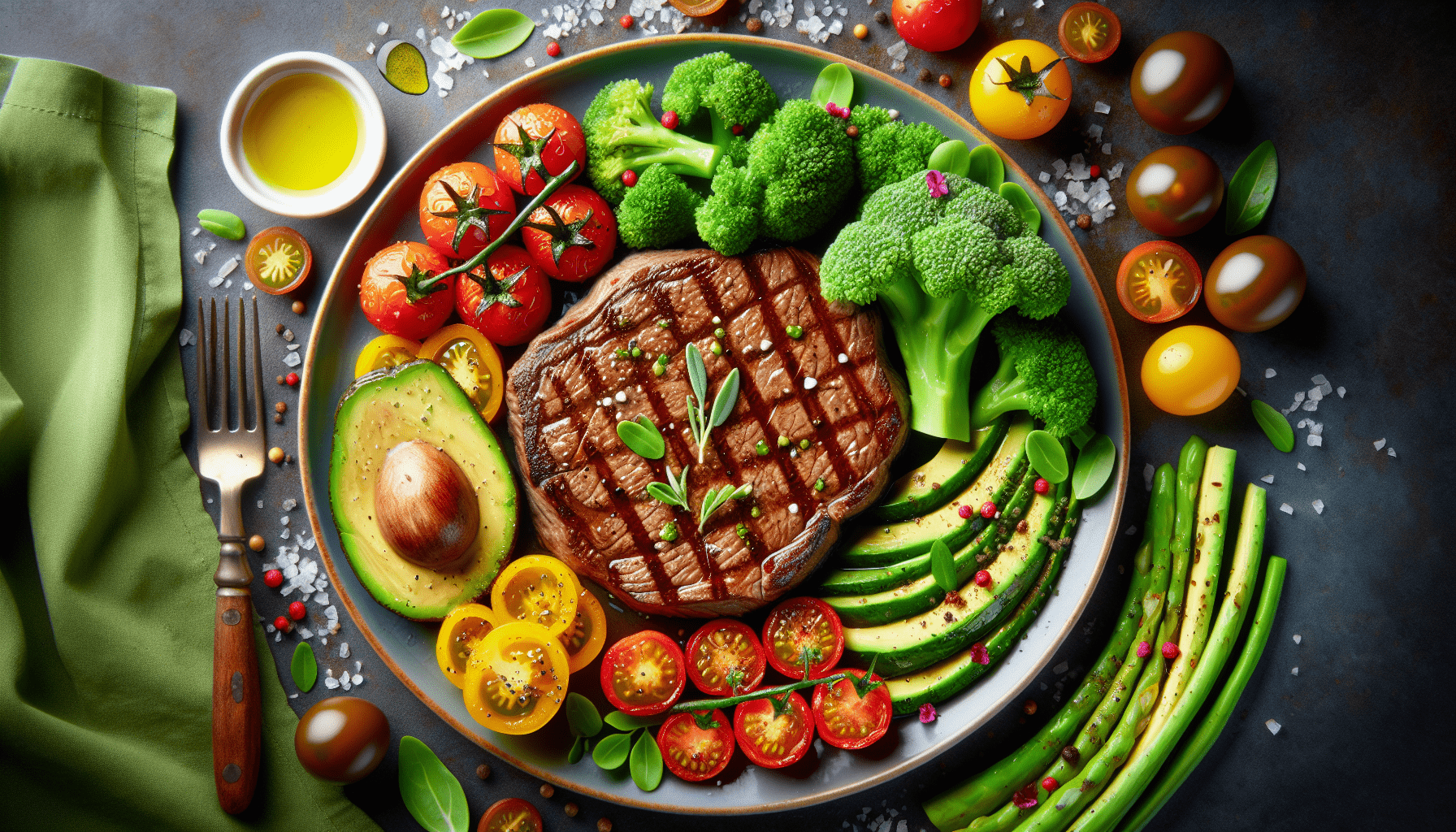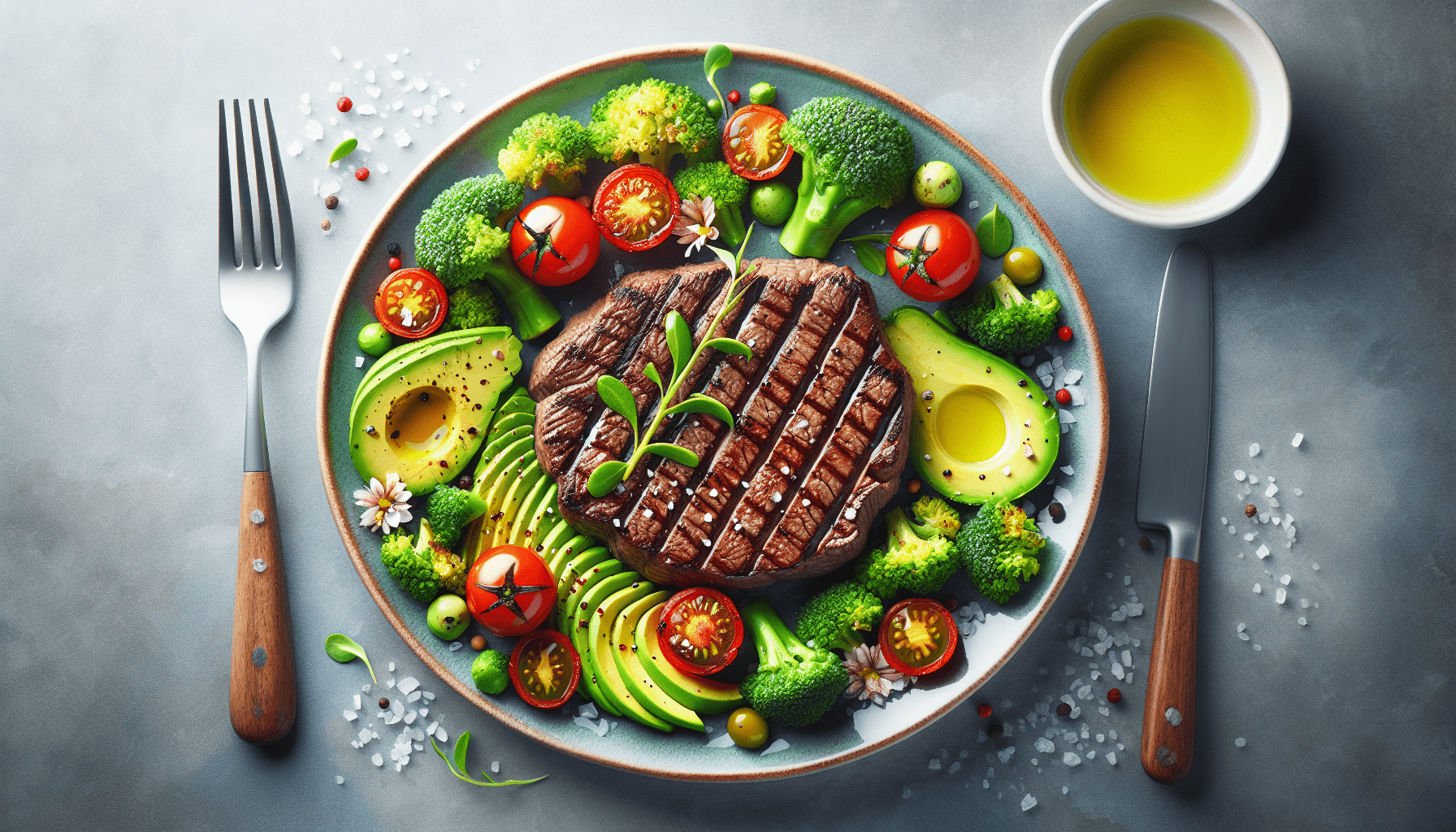Have you ever wondered what foods you can actually eat on a keto diet? The ketogenic diet, often shortened to keto, has become a popular choice for those wanting to lose weight and increase their energy levels. But navigating the food list can be a bit tricky if you’re starting out.

Understanding the Keto Diet
The keto diet is all about achieving a state called ketosis. This state occurs when your body shifts from burning carbohydrates for energy to burning fats. It’s the key to the diet’s effectiveness in weight loss and energy boost.
Carb Restriction
The main focus on a keto diet is to significantly restrict carbohydrate intake. This means eating 20-50 grams of carbs per day, which is much lower than the usual diet. Because carbs are reduced, your body’s metabolism shifts and begins to burn fat for energy.
High Fat, Moderate Protein
While restricting carbs, the keto diet encourages high fat consumption and moderate protein intake. Fat becomes your primary source of energy. Protein is essential but should be consumed in moderation to ensure it does not interrupt the ketosis process.
Keto Diet Benefits
By adhering to a keto diet, you are likely to experience several key benefits:
- Weight Loss: As you enter ketosis, your body burns fat more efficiently.
- Improved Energy Levels: Burning fat provides a more consistent energy source.
- Mental Clarity: Many people report improved focus and mental clarity.
- Health Improvements: Some find improvements in blood sugar levels and cholesterol.
Foods to Eat on a Keto Diet
One of the most frequent questions asked is what foods are permissible on a keto diet. Here, we will break down foods into various categories to make it easier to understand.
Proteins
Protein choices are crucial since they support bodily functions and muscle maintenance. Here’s a list that can guide you:
| Food Category | Examples |
|---|---|
| Meat | Beef, pork, lamb, poultry |
| Fish and Seafood | Salmon, sardines, mackerel, shrimp |
| Eggs | Free-range or organic eggs |
- Meat: Opt for cuts high in fat, such as steaks, lamb chops, and chicken thighs.
- Fish and Seafood: These are excellent as they are rich in healthy fats.
- Eggs: Considered a keto staple, eggs are versatile and nutrient-rich.
Dairy and Dairy Alternatives
Dairy products can be enjoyed on a keto diet if they are high in fat and low in carbs.
| Food Category | Examples |
|---|---|
| Cheese | Cheddar, mozzarella, goat cheese |
| Cream | Heavy cream, sour cream |
| Butter | Grass-fed butter, ghee |
| Yogurt | Greek yogurt (unsweetened) |
- Cheese: Great for adding into meals or as snacks.
- Cream: Perfect for coffee or making keto-friendly desserts.
- Butter: Used in cooking and baking due to its high-fat content.
- Yogurt: Tailor your servings and pair with low-carb fruits.
Nuts and Seeds
Nuts and seeds provide healthy fats and are useful for snacks or as part of meals:
| Food Category | Examples |
|---|---|
| Nuts | Almonds, walnuts, pecans |
| Seeds | Chia seeds, flax seeds, sunflower seeds |
- Nuts: Be cautious with portions as they can be calorie-dense.
- Seeds: Excellent for adding texture and nutrients to dishes.
Vegetables
Non-starchy vegetables should be a priority as they are low in carbs but packed with vitamins.
| Food Category | Examples |
|---|---|
| Leafy Greens | Spinach, kale, lettuce |
| Cruciferous Vegetables | Broccoli, cauliflower, Brussels sprouts |
| Others | Zucchini, bell peppers, asparagus, mushrooms |
- Leafy Greens: Often used in salads or as cooked sides.
- Cruciferous Vegetables: Serve as both main dishes and sides.
- Others: Add variety and textures to your meals.
Fats and Oils
Fats are a cornerstone of the keto diet as they form your primary energy source.
| Food Category | Examples |
|---|---|
| Healthy Oils | Olive oil, coconut oil, avocado oil |
| Animal Fats | Lard, tallow |
| Other Fats | Avocados, olives |
- Healthy Oils: Use for cooking or dressings.
- Animal Fats: Often overlooked, but very keto-friendly.
- Other Fats: Provide good fats and are flavorful.
Berries and Sweeteners
Though fruits are generally carb-heavy, some berries are acceptable. Also, certain sweeteners can replace sugar.
| Food Category | Examples |
|---|---|
| Berries | Strawberries, raspberries, blackberries |
| Sweeteners | Stevia, erythritol, monk fruit |
- Berries: Should be consumed in moderation.
- Sweeteners: Ideal for keto baking and dessert making without spiking insulin levels.
Foods to Avoid on a Keto Diet
Avoiding certain food groups is crucial to maintain ketosis effectively. Carbs are the main culprits to watch out for.
High-Carb Foods
Eliminate or greatly reduce these to stay in ketosis:
| Food Group | Examples |
|---|---|
| Grains and Starches | Bread, pasta, rice, potatoes |
| Sugary Foods | Candy, cakes, pastries |
| Fruits | Bananas, apples, grapes |
- Grains and Starches: Includes anything made from wheat, corn, or rice.
- Sugary Foods: Any processed sugar-based products.
- Fruits: Most fruits are high in natural sugars and carbs.
Low-Fat Diet Products
Often contain hidden sugars and aren’t suitable for a high-fat diet.
| Food Group | Examples |
|---|---|
| Low-Fat | Yogurts, cheese, spreads |
- Low-Fat Products: Usually replace fat with added sugars or carbs.
Legumes
Legumes can be high in carbohydrates and should be limited.
| Food Group | Examples |
|---|---|
| Legumes | Beans, lentils, chickpeas |
- Legumes: Though nutritious, they have high carb content.
Sugary and Processed Drinks
Beverages can be a hidden source of carbs.
| Food Group | Examples |
|---|---|
| Sugary Drinks | Sodas, sweetened coffee, sports drinks |
| Processed Drinks | Store-bought smoothies, flavored waters |
- Sugary Drinks: Often the biggest culprit for hidden sugars.
- Processed Drinks: Check labels for hidden carbs and sugars.

Keto Supplements
Keto supplements can support your diet by boosting energy and aiding fat loss. Here are some common ones to consider:
MCT Oil
Medium-chain triglycerides (MCT) oil is a type of fat that is digested quickly and converts into energy, aiding ketosis.
- Easily Digestible: Quickly absorbed and converted into energy.
- Supports Ketosis: Helps in maintaining a state of ketosis.
Exogenous Ketones
Supplementing with exogenous ketones can help you achieve ketosis faster.
- Kickstart Ketosis: Useful if you’re new or have had a break from the diet.
- Enhance Performance: Can boost physical and mental performance.
Electrolytes
Electrolyte balance is crucial since keto can sometimes lead to imbalances.
- Prevent Keto Flu: Replenish lost nutrients to avoid the “keto flu”.
- Maintain Balance: Ensure proper body function.
Meal Planning on Keto
Planning your meals can greatly support your success on the keto diet. Here are some tips:
Breakfast Options
A keto breakfast shouldn’t be skipped as it sets the tone for the day.
- Eggs and Avocado: A classic keto breakfast.
- Greek Yogurt with Nuts: Low-carb yet filling.
- Keto Smoothies: Using unsweetened almond milk, spinach, and protein powder.
Lunch Choices
Keep your lunch balanced and straightforward.
- Salads: Add in proteins like grilled chicken or beef.
- Lettuce Wraps: Use ground meat, cheese, and avocado.
- Meat and Veggie Skewers: Easy to prepare and versatile.
Dinner Ideas
End your day with a satisfying, nutrient-rich meal.
- Steak and Asparagus: Simple but effective.
- Cauliflower Rice Bowl: Substitutes regular rice with cauliflower.
- Keto Pizza: Made with a crust of almond flour and cheese.
Snacks
Snacking can help curb hunger without breaking ketosis.
- Cheese Sticks: Easy and portable.
- Nuts: Moderate portions of almonds or walnuts.
- Keto Bars: Specifically designed to be low-carb and high-fat.
Keto-tailored Recipes
Finding recipes tailored to the keto diet can make meal-planning easier. Here are simple yet effective dishes:
Zucchini Noodles with Pesto
Swap traditional pasta with spiralized zucchini noodles and toss them with a homemade pesto.
- Ingredients: Zucchini, basil, pine nuts, parmesan, olive oil, garlic.
- Preparation: Spiralize the zucchini, blend the pesto ingredients, and toss together.
Keto Chicken Salad
A simple, quick-to-make lunch option that combines proteins and fats.
- Ingredients: Shredded chicken, mayonnaise, celery, green onions, salt, pepper.
- Preparation: Mix all ingredients until well-combined.
Avocado Chocolate Mousse
A delightful dessert that’s keto-friendly.
- Ingredients: Avocado, cocoa powder, sweetener (e.g., stevia), vanilla extract.
- Preparation: Blend ingredients until smooth and refrigerate before serving.
Common Keto Challenges and Solutions
Following the keto diet brings challenges. Here are some common hurdles and how to navigate them.
Adaptation Period
Initial adaptation can cause flu-like symptoms known as the “keto flu.”
- Solution: Ensure adequate hydration and supplement with electrolytes.
Dining Out
Finding keto-friendly options at restaurants can be difficult.
- Solution: Stick to meats and non-starchy veggies, and avoid sauces and dressings that may contain hidden sugars.
Cravings and Temptations
You may crave carbs, especially at the beginning.
- Solution: Have keto-friendly snacks ready and keep hydrated since thirst can sometimes be mistaken for hunger.
Social Pressure
You might face questions or pressure from friends and family.
- Solution: Educate them about your choices or be firm and remind them it’s for your health.
Conclusion
Adopting a keto diet can be a transformative journey for your body and energy levels. Understanding what foods to eat and avoid, as well as how to supplement and plan your meals, sets the foundation for success. Supplements can give you that extra boost, while planning ahead can help mitigate challenges.
By embracing these guidelines, staying informed, and listening to your body, navigating the keto diet can be both rewarding and sustainable. With careful attention to your dietary choices, keto can lead you to better health, weight loss, and an energized lifestyle.





